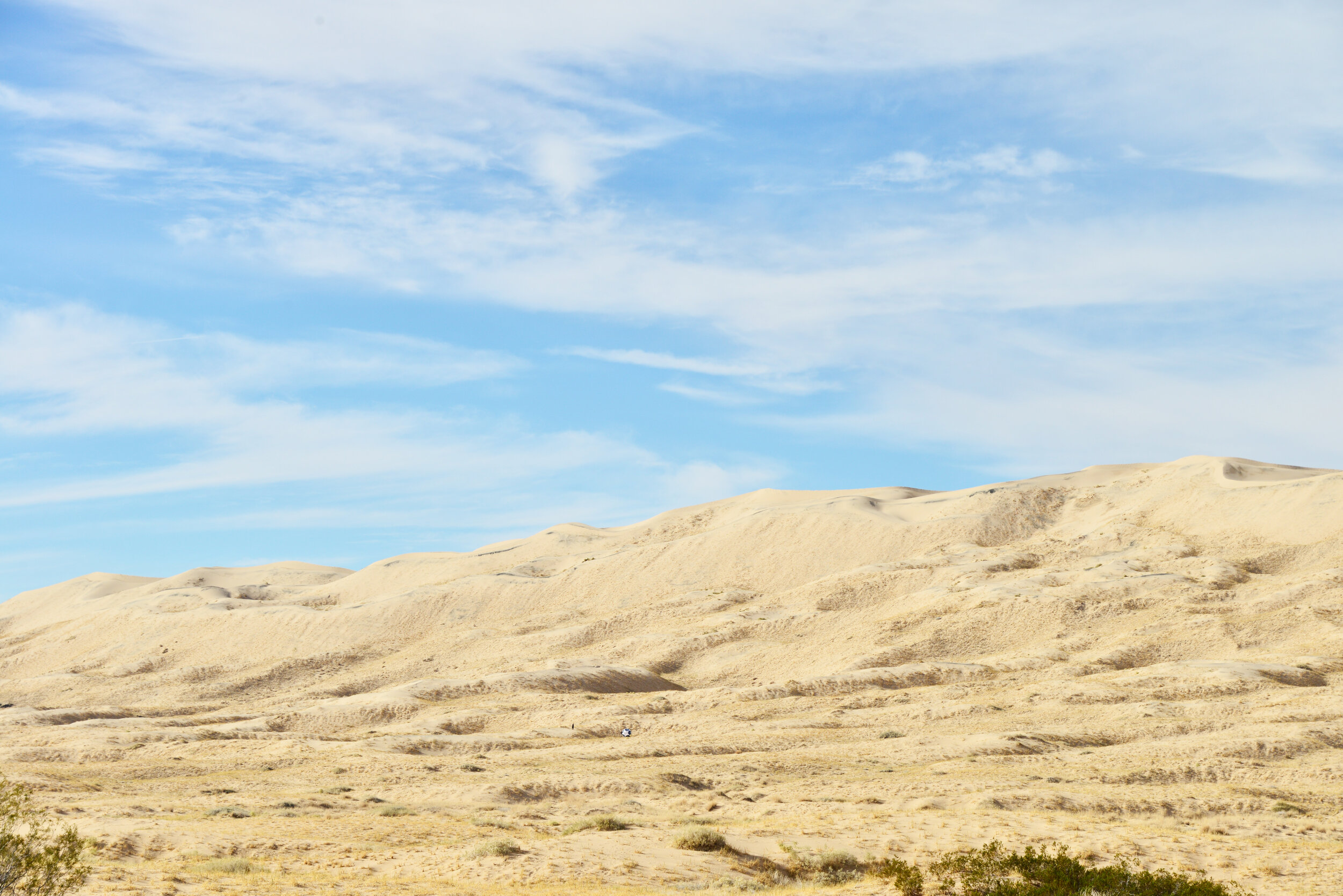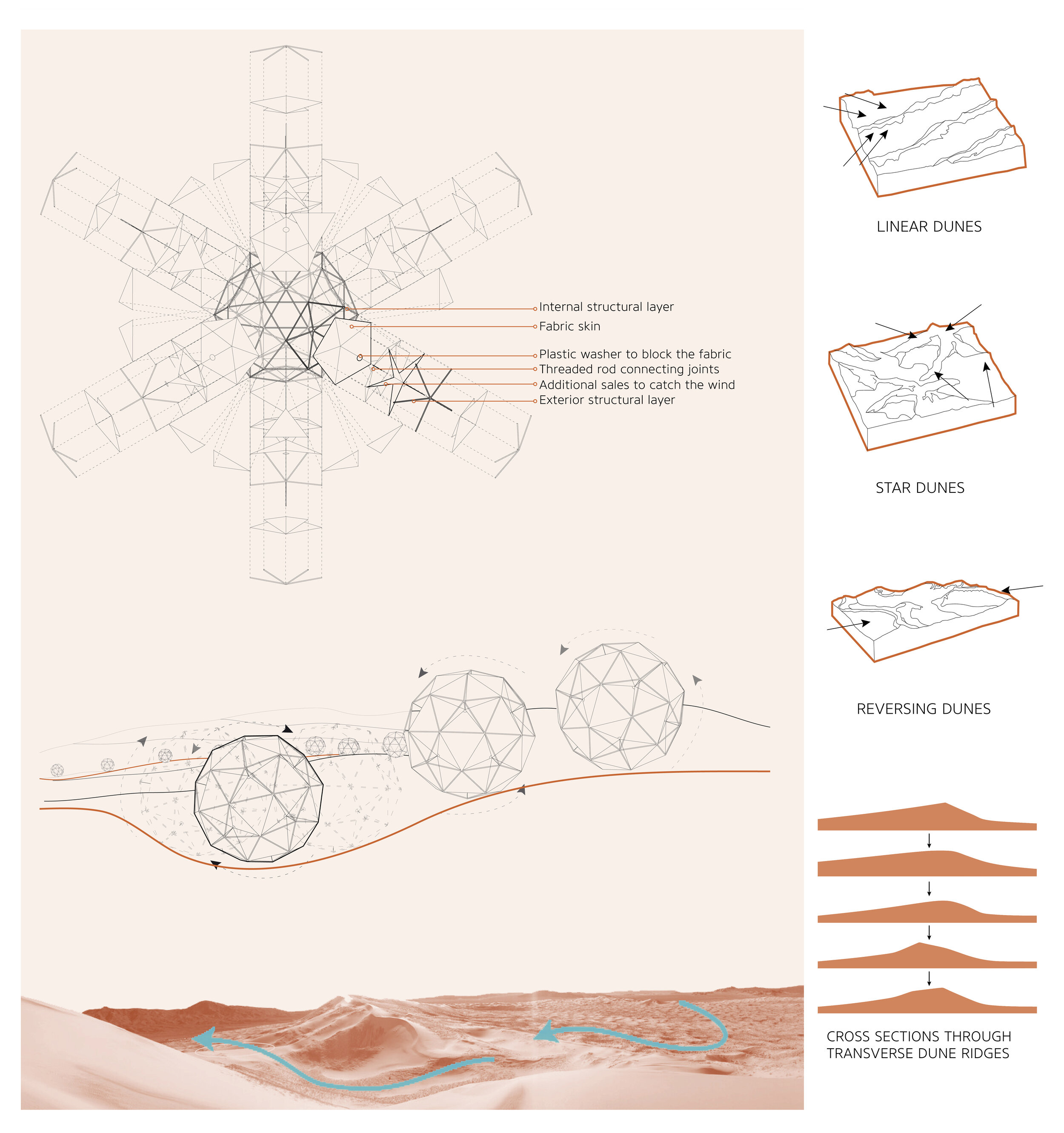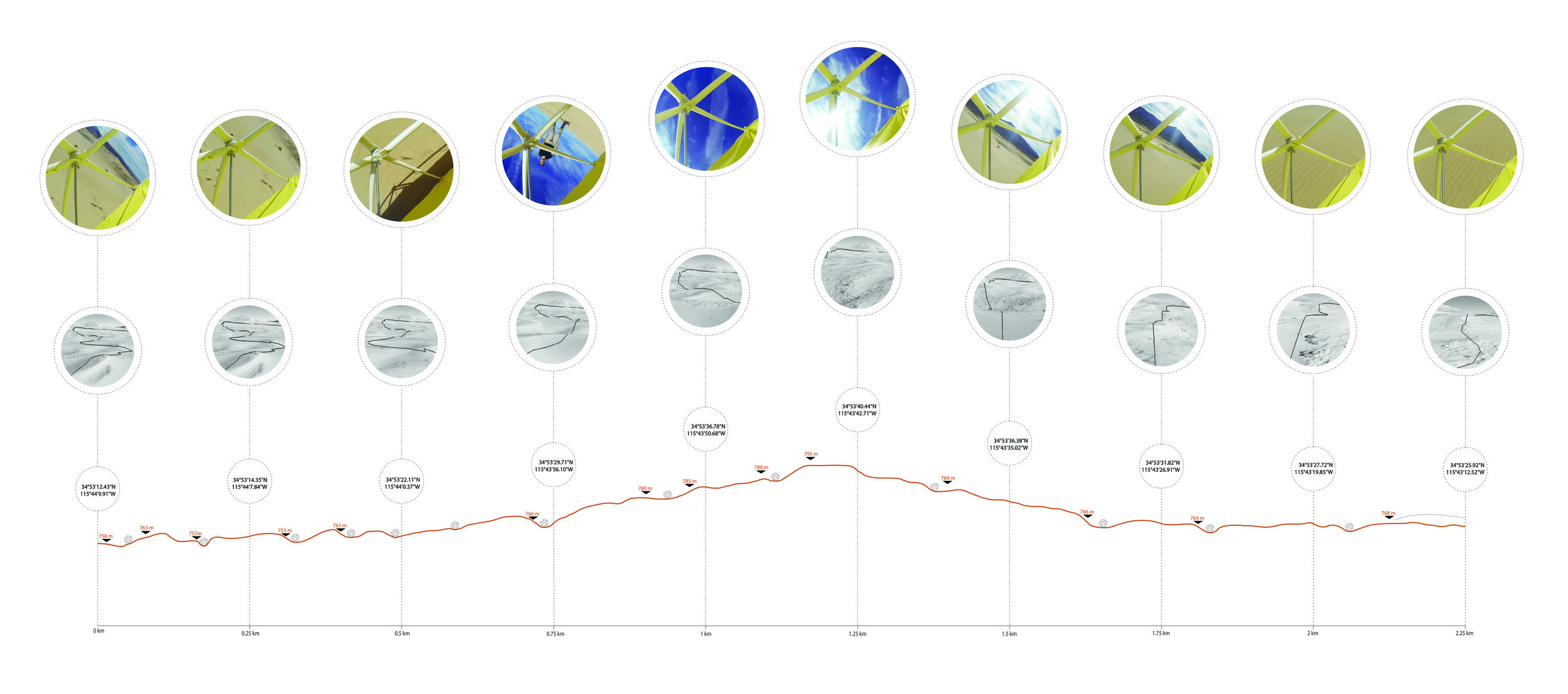Geodesic Tumbleweed
OFF-GRID: Geodesic Tumbleweed
Consisting of 5 layers of sand, The Kelso Dunes of Mojave Desert, CA have formed over a period of climate change lasting the last 25,000 years. Geodesic Tumbleweed aimed to uncover some of its topographical history by tracing the invisible forces of aeolian transportation pathways and making them visible to the eye. Hostile landscapes such as this one provide the ideal grounds to develop ways of reading, or indeed mimic the environmental factors shaping the topography of Mars, here on Earth.
The artificial tumbleweed mimics the behaviour of a natural one, drawing the aeolian pattern shaping the landscape. A sectional scan reveals the topographical shift in real-time. GPS coordinates are recorded with a smart device, while footage portraying the physical characteristics of the landscape is recorded with a camera attached to the structure.
This biomimetic device leaves a double imprint: on the physical landscape and on a digital canvas.
Geodesic Tumbleweed is a semi-autonomous inhabitable architectural device: on the one hand independent because of its wind-reactive behaviour and intelligence of recording the environment it operates in, on the other hand dependent on human engagement and ability to overreach under unpredictable conditions.










